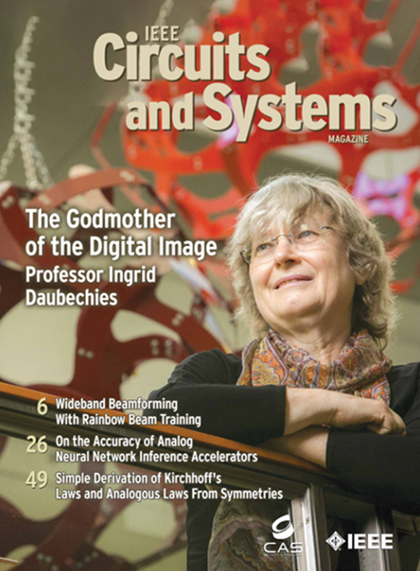Fast Settling Phase-Locked Loops: A Comprehensive Survey of Applications and Techniques [Feature]
IF 5.6
2区 工程技术
Q1 ENGINEERING, ELECTRICAL & ELECTRONIC
引用次数: 0
Abstract
Fast settling phase locked loops (PLLs) play a pivotal role in many applications requiring rapid attainment of a stable frequency and phase. In modern communication standards, these PLLs are extensively utilized to guarantee precise compliance with dynamic resource allocation requirements. In processors, these PLLs manage dynamic voltage frequency scaling. Moreover, the fast-settling PLLs expedite the scanning of frequency spectra in sophisticated electronic radar set-ups, proving particularly advantageous for imaging and scanning radar applications. The rapid response exhibited by these PLLs is also harnessed in quantum technologies, catering to the urgent need for precise frequency adjustments to manipulate qubit states effectively. The strategies employed to attain fast-settling PLLs are primarily classified into five broad techniques in this article: enhanced phase frequency detection, hybrid multiple subsystems, VCO start-up, gear shift, and look-up table or finite state machine. This article explores the fundamental operational principles encompassing these techniques and presents optimal settling times for each method reported in the literature. Finally, the architectures utilizing these techniques will be evaluated based on their figure of merit (FoM), settling time, and tuning range.快速沉淀锁相环:应用与技术综合概览 [特写]
在许多要求快速获得稳定频率和相位的应用中,快速沉淀锁相环(PLL)发挥着举足轻重的作用。在现代通信标准中,这些锁相环被广泛用于保证精确地满足动态资源分配要求。在处理器中,这些 PLL 可管理动态电压频率缩放。此外,在复杂的电子雷达装置中,快速沉淀 PLL 加快了频谱扫描速度,在成像和扫描雷达应用中尤其具有优势。量子技术中也利用了这些 PLL 所表现出的快速反应能力,以满足对精确频率调整的迫切需求,从而有效地操纵量子比特状态。本文将实现快速平稳 PLL 所采用的策略主要分为五大技术:增强型相位频率检测、混合多子系统、VCO 启动、换挡以及查找表或有限状态机。本文探讨了这些技术的基本运行原理,并介绍了文献中报道的每种方法的最佳沉淀时间。最后,将根据这些技术的优点系数 (FoM)、沉淀时间和调谐范围对利用这些技术的架构进行评估。
本文章由计算机程序翻译,如有差异,请以英文原文为准。
求助全文
约1分钟内获得全文
求助全文
来源期刊

IEEE Circuits and Systems Magazine
工程技术-工程:电子与电气
CiteScore
9.30
自引率
1.40%
发文量
34
审稿时长
>12 weeks
期刊介绍:
The IEEE Circuits and Systems Magazine covers the subject areas represented by the Society's transactions, including: analog, passive, switch capacitor, and digital filters; electronic circuits, networks, graph theory, and RF communication circuits; system theory; discrete, IC, and VLSI circuit design; multidimensional circuits and systems; large-scale systems and power networks; nonlinear circuits and systems, wavelets, filter banks, and applications; neural networks; and signal processing. Content also covers the areas represented by the Society technical committees: analog signal processing, cellular neural networks and array computing, circuits and systems for communications, computer-aided network design, digital signal processing, multimedia systems and applications, neural systems and applications, nonlinear circuits and systems, power systems and power electronics and circuits, sensors and micromaching, visual signal processing and communication, and VLSI systems and applications. Lastly, the magazine covers the interests represented by the widespread conference activity of the IEEE Circuits and Systems Society. In addition to the technical articles, the magazine also covers Society administrative activities, as for instance the meetings of the Board of Governors, Society People, as for instance the stories of award winners-fellows, medalists, and so forth, and Places reached by the Society, including readable reports from the Society's conferences around the world.
 求助内容:
求助内容: 应助结果提醒方式:
应助结果提醒方式:


